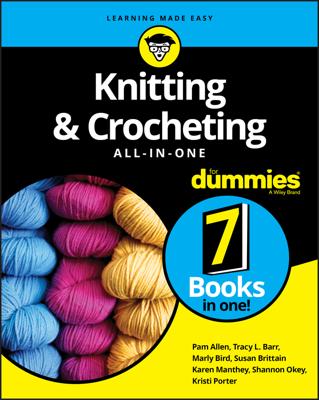When choosing yarn, remember that yarns, garment shapes, and stitch patterns must work together for a successful knitting or crochet project. Choosing yarn can be hard when there are so many yarn selections available. Here are some points to keep in mind:
Match the yarn to the stitch. The yarn you choose can either accentuate the effect you’re trying to create or camouflage it. As a general rule, the wilder the yarn, the simpler the sweater shape and pattern stitch should be. The plainer the yarn, the more texture and shaping details will show up.
Here are some guidelines:
Smooth-plied yarn in a solid color: Use these yarns for cables and more complex stitch patterns. They give your stitches a crisp look, showcasing your effort. In general, plied and twisted yarns are sophisticated and classic. Single plies are rustic and relaxed.
Variegated and novelty yarns: Don’t knock yourself out with tricky stitch work if you’re using variegated or highly textured yarns. The stitches won’t show up, and all your stitch-making effort will be for naught. Simple stitches, such as stockinette and garter, are best with these yarns.
Cotton, silk, soy, bamboo, and other inelastic yarns: Look for patterns that don’t depend on ribbing for fit. Find patterns that hang straight to highlight the drape of these yarns.
Substitute one yarn for another. If you don’t want to use or can’t find the yarn specified on a pattern, the safest option — at least until you’re experienced enough to take into account all the factors — is to talk to a sales associate in a specialty yarn shop.
When substituting yarn, consider the following:
Yardage: Be sure to pay attention to actual yardage listed on the label, not just number of grams or ounces.
Weight: The weights (thicknesses) should be the same. If the pattern you’ve chosen expects you to get 4 stitches and 6 rows to the inch and you substitute a yarn that gives you a different gauge, your sweater will turn out a different size than the one given in the pattern.
Fiber: Yarns of different fibers, even if they have the same gauge, will have different characteristics.
Be sure you know the characteristics of the yarn and are comfortable with the way these differences will affect the finished piece. Just because two yarns have the same gauge doesn’t mean that they can substitute for each other successfully in a given pattern. If the yarns have different characteristics — texture, drape, fiber, and color — then the final garment will look and feel different from the one pictured in the pattern.

